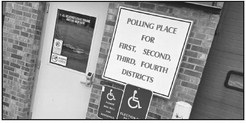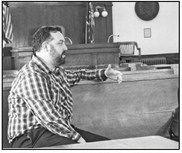Napability rating


Brian Wilson
Naps are important.
According to the Sleep Foundation (yes there is actually a real thing), “a short nap of 20-30 minutes can help to improve mood, alertness and performance.” According to the Sleep Foundation, nappers are in good company with Winston Churchill, John F. Kennedy, Ronald Reagan, Napoleon Bonaparte, Albert Einstein, Thomas Edison and George W. Bush all having been known to have valued an afternoon nap.
According the Sleep Foundation, 85% of mammals are “polyphasic sleepers,” meaning that they sleep for short periods throughout the day. Humans are part of the minority that are “monophasic sleepers,” meaning that our days are divided into periods of sleep and periods of being awake.
As anyone who has spent time with a toddler knows, naps are vitally important to prevent meltdowns and all manner of other mischief, not the least of which is the mental health of caregivers.
As we grow up, a good nap becomes increasingly hard to find. Part of this is just logistics. There are not many practical locations to nap at most workplaces since they are designed to be places where people get stuff done rather than lounging about.
Naps have largely gotten a bad rap considering the documented benefits of a short snooze. According to the Sleep Foundation, naps can restore alertness, enhance performance, and reduce mistakes and accidents. A study at NASA on sleepy military pilots and astronauts found that a 40-minute nap improved performance by 34% and alertness 100%. Napping also has psychological benefits. A nap can be a pleasant luxury offering a mini-vacation.
Like many other college students, my daughter Beth, takes naps seriously. Given the erratic hours that many college students keep as they balance academics with social obligations, they are used to snatching a few winks whenever possible.
As Beth points out, not all potential napping spots are created equal. She has developed a highly subjective “napability rating” system to judge the best places to take a snooze including a 10-point scale with a variety of factors weighing into the rating including comfort and heat retention.
For the past few months we have been casually shopping for new furniture to replace the sofas in our family room. These have been heavily used, and abused, over the years by my children and this past spring I had to use some plywood to shore up the sagging springs, buying us enough time to decide what we want. This is a challenge given the layout and future use of the room. The challenge is similar to picking out a mattress for a guest bedroom. On one hand, you want to have something decent in the event that you have to sleep there after a misunderstanding with your spouse, but at the same time, you also do not want it so nice that your guests never want to leave.
Beth rates our current furniture as a solid two on her napability scale, placing it just above old plastic emergency room waiting room furniture and metal folding chairs. As Beth notes, it is still possible to nap even on poorly rated furniture, but will likely bring with it uncomfortable side effects such as a stiff neck or a sore bottom.
As we have checked out furniture options, Beth gives each piece an unsolicited napability rating along with a critique of its positive and negative attributes from being too firm, to being too squishy. She recently saw an online ad for a giant six-foot wide memory-foam filled bean bag chair. Which she says is, “Probably an 8/10, but might be too fluffy, not enough support and it may get too warm.” As you can tell, she puts a lot of thought into this rating system.
While there is always hope for the perfect 10/10, the likelihood of finding something like that is pretty rare and sometimes you just have to settle for a good five or seven.
Brian Wilson is News Editor at The Star News.




